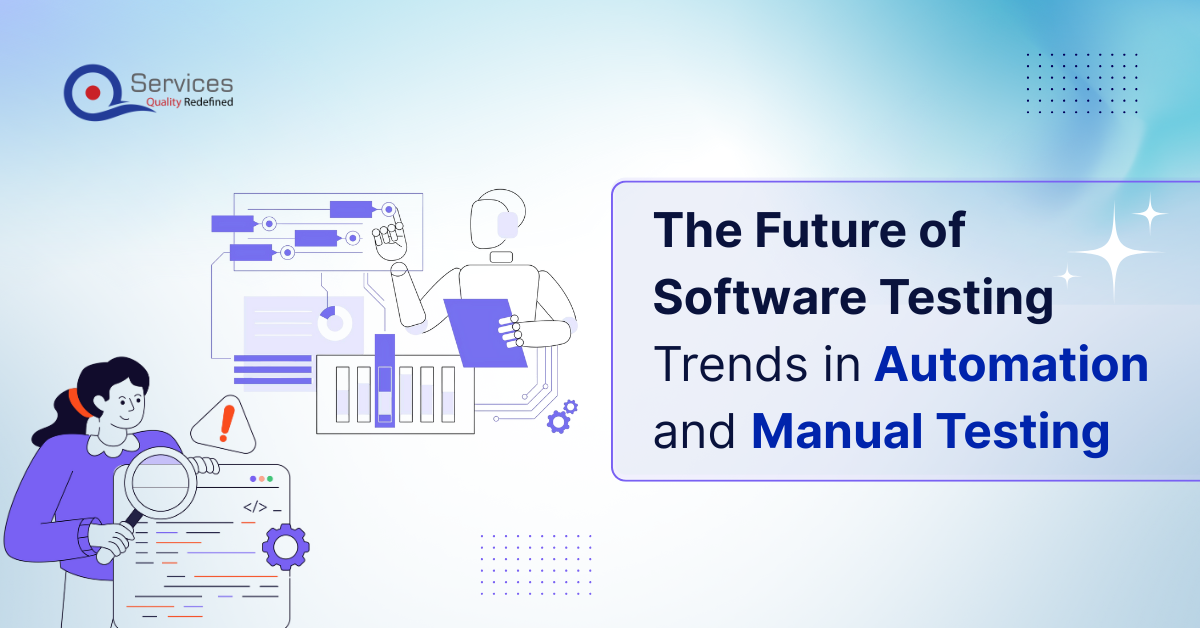
Home » How to Build a Hybrid Testing Strategy for Optimal Results

In today’s fast-paced software development landscape, delivering high-quality applications quickly is a non-negotiable priority. However, achieving this balance between speed and quality often feels like chasing two rabbits at once. Enter the hybrid testing strategy—a powerful approach that combines the strengths of manual and automated testing to optimize results. Whether you’re a QA engineer crafting a test strategy document, a project manager seeking a software test strategy, or a developer curious about what is a test strategy, this guide will walk you through everything you need to know.
Before we unpack hybrid testing, let’s clarify what is a test strategy?
A test strategy is a high-level plan that outlines how testing will be conducted to ensure a software product meets its requirements and performs as expected. It’s not about the nitty-gritty details of test cases (that’s what test plans are for) but rather the overarching approach thinks of it as the “why” and “how” behind your testing efforts.
A test strategy document typically includes:
– Objectives: What are you aiming to achieve (e.g., validate functionality, ensure performance)?
– Scope: What parts of the application will be tested?
– Methods: Will you use manual testing, automation, or both?
– Tools: What tools will support your efforts?
– Resources: Who’s involved, and what skills do they need?
For example, a sample test strategy document might state: “Validate the e-commerce checkout process using automated regression tests and manual exploratory testing to ensure a seamless user experience.” This is a basic test strategy example, but it sets the stage for more complex approaches like strategy testing in hybrid frameworks.
In software testing strategies, the test strategy in software testing evolves based on project needs. Traditional methods leaned heavily on manual testing, while modern approaches favor automation. But what if you could combine the best of both worlds? That’s where hybrid testing shines.
Hybrid testing is a software testing strategy that integrates manual and automated testing methodologies to maximize efficiency, coverage, and accuracy. It’s not about choosing one over the other—it’s about leveraging their complementary strengths. Manual testing excels at exploratory, usability, and ad-hoc scenarios, while automated testing shines in repetitive, data-driven, and regression tasks. Together, they form a robust QA test strategy.
The demand for rapid releases has made purely manual testing impractical for large-scale projects, yet automation alone can’t catch every nuance (like a confusing UI or edge-case bug). A hybrid testing approach bridges this gap, offering:
– Speed: Automation handles repetitive tasks quickly.
– Precision: Manual testing catches what scripts miss.
– Cost-efficiency: Balances resource use between tools and human expertise.
– Flexibility: Adapts to diverse project needs.
For instance, imagine testing a mobile banking app. Automated tests could verify transaction calculations across thousands of scenarios, while manual testers ensure the app feels intuitive on different devices. This is combining manual and automated testing for optimal results in action.
Let’s dive into effective hybrid testing strategies for software quality assurance (QA). Hybrid testing combines multiple testing approaches—typically manual and automated testing—into a cohesive strategy to maximize efficiency, coverage, and quality. It leverages the strengths of each method while mitigating their weaknesses, making it a practical choice for modern software development lifecycles like Agile and DevOps. Below, I’ll outline key strategies, principles, and considerations to make hybrid testing work effectively.
Before jumping in, establish what you’re testing for: functionality, performance, security, usability, or a mix? Hybrid testing shines when you align it with specific goals. For instance:
– Functional Testing: Ensure the software behaves as expected.
– Regression Testing: Verify new changes don’t break existing features.
– Exploratory Testing: Uncover edge cases automation might miss.
Map out the scope—Which modules need testing? What’s the priority? This helps decide where automation saves time and where manual testing adds value.
The heart of hybrid testing is finding the right mix:
– Automate Repetitive Tasks: Unit tests, smoke tests, and regression suites are prime candidates. Tools like Selenium, JUnit, or TestNG can handle these efficiently. For example, automating a login process that runs 100 times daily saves hours.
– Manual for Creativity and Context: Exploratory testing, usability checks, and one-off scenarios benefit from human intuition. No script can fully replicate a tester “feeling” that a UI looks off.
A good rule of thumb: Automate 70-80% of stable, predictable test cases; leave 20-30% for manual flexibility. Adjust based on your project’s complexity.
Not everything deserves equal attention. Use risk-based prioritization:
– High-Risk Areas: Critical features (e.g., payment gateways) get rigorous automated and manual scrutiny.
– Stable Features: Automate these to free up time.
– New/Volatile Features: Lean on manual testing until they stabilize.
For example, in an e-commerce app, automate cart calculations but manually test a new checkout flow until it’s battle tested.
Hybrid testing thrives with the right toolkit:
– Automation Tools: Selenium (web), Appium (mobile), Postman (APIs).
– Test Management: Jira, TestRail, or Zephyr to track both manual and automated efforts.
– CI/CD Integration: Jenkins or GitHub Actions to run automated tests on every build.
Integrate these into a unified pipeline. For instance, trigger automated unit tests on code commits, then queue manual UI tests for the next sprint review.
Build reusable test components:
– Automated Scripts: Write modular code (e.g., Page Object Model in Selenium) so changes in one area (like a button’s ID) don’t break everything.
– Manual Templates: Standardize checklists for exploratory sessions to ensure consistency.
This modularity lets you swap between manual and automated execution as needs shift.
In hybrid setups, timing matters. Embed testing into the development pipeline:
– Shift-Left: Catch bugs early with unit tests and manual reviews during coding.
– Shift-Right: Monitor production with automated performance tests and manual feedback loops.
For example, a DevOps team might run automated API tests pre-deployment and manual usability tests post-launch.
Hybrid testing demands versatility. Train developers and QA engineers to:
– Write and maintain automated scripts.
– Perform structured manual testing without over-relying on tools.
– Collaborate on test design—developers often know edge cases QA might miss.
Cross-skilling reduces bottlenecks and fosters ownership.
Track metrics to refine your strategy:
– Test Coverage: Are you hitting all critical paths?
– Defect Escape Rate: How many bugs slip to production?
– Execution Time: Is automation speeding things up without sacrificing quality?
If automated tests take too long, trim redundant cases. If manual testing misses’ bugs, tighten exploratory guidelines.
Imagine a banking app:
– Automated: Daily regression tests for account balance calculations (stable, repetitive).
– Manual: Exploratory testing of a new biometric login (unpredictable user behavior).
– Hybrid Outcome: Automation ensures core reliability; manual testing catches UX quirks (e.g., fingerprint scanner lag on older devices).
– Over-Automation: Automating flaky UI tests can waste time. Stick to stable areas.
– Tool Overload: Too many tools fragment efforts. Pick a lean stack.
– Communication Gaps: Manual and automation teams must sync on goals.
Get free Consultation and let us know your project idea to turn into an amazing digital product.

Building a hybrid testing strategy isn’t a one-size-fits-all process—it requires thoughtful planning and execution. Below is a step-by-step guide to help you craft a test strategy template tailored to your needs.
Start by asking: What does success look like? Your test strategy should align with project goals, such as:
– Ensuring core functionality (e.g., login, payments).
– Validating performance under load.
– Confirming usability for end-users.
Example: For a CRM tool, your objective might be “Ensure 99% uptime and intuitive navigation for sales teams.” This clarity drives every subsequent decision.
Understand your software’s complexity, user base, and critical areas. Break it down:
– Stable Features: Ideal for automation (e.g., login workflows).
– New or Unpredictable Features: Better suited for manual testing (e.g., a new chatbot UI).
– Risk Areas: High-impact zones needing thorough validation.
A software test strategy thrives on this analysis. For instance, a healthcare app might prioritize manual testing for compliance features and automation for data processing.
Hybrid testing techniques blend different approaches. Common methodologies include:
– Functional Testing: Validates features (manual for UI, automated for APIs).
– Regression Testing: Ensures updates don’t break existing functionality (mostly automated).
– Exploratory Testing: Uncovers unexpected issues (manual).
– Performance Testing: Measures speed and scalability (automated).
Integrating different testing methodologies in a hybrid approach means assigning tasks based on strengths. A test strategy example might pair automated regression tests with manual usability checks.
Your test strategy template should specify tools:
– Automation Tools: Selenium, Cypress, or Appium for UI/API testing.
– Manual Testing Aids: TestRail or Jira for tracking.
– Performance Tools: JMeter or LoadRunner.
For a hybrid testing framework, ensure tools integrate well. For example, Selenium can automate browser tests, while testers manually explore edge cases logged in Jira.
Who does what? Define:
– Automation Engineers: Build and maintain scripts.
– Manual Testers: Focus on creative and user-centric testing.
– QA Leads: Oversee the QA test strategy and ensure alignment.
A small team might have overlapping roles, but clarity prevents bottlenecks.
Map out how manual and automated efforts intertwine:
1. Initial Exploration: Manual testers explore new features.
2. Automation Development: Scripts are written for stable areas.
3. Execution: Automated tests run first, followed by manual validation.
4. Feedback Loop: Results inform updates to both processes.
This workflow is key to hybrid testing techniques to enhance software testing efficiency.
Run your tests, track results, and adjust. Use dashboards (e.g., in Azure DevOps) to monitor:
– Pass/fail rates.
– Coverage metrics.
– Defect trends.
A strategy test isn’t static. Review:
– Are automated tests catching enough bugs?
– Is manual testing overburdened?
– Can more tasks be automated?
Refine your test strategy in software testing based on data and team feedback.
The magic of hybrid testing lies in synergy. Let’s break down how to balance these approaches effectively.
Manual testing is irreplaceable for:
– Usability: Does the app feel right? Automation can’t judge aesthetics.
– Exploratory Testing: Unscripted sessions uncover hidden defects.
– One-off Scenarios: Small changes don’t justify automation.
Example: Testing a game’s new level—manual testers assess immersion and fun, which scripts can’t replicate.
Automation excels at:
– Repetition: Running the same test across browsers or datasets.
– Regression: Verifying old features after updates.
– Scale: Simulating thousands of users.
Example: An e-commerce site’s checkout process—automated scripts test payment flows nightly.
The goal is harmony. A test strategy example might look like:
– Day 1: Manual testers explore a new feature and log defects.
– Day 2: Automation scripts are built for validated workflows.
– Day 3: Automated tests run, freeing manual testers for edge cases.
This balance is the essence of combining manual and automated testing for optimal results.
To ensure your hybrid testing strategy succeeds, follow these best practices:
1. Prioritize Test Coverage
Focus on critical paths first. Use risk-based testing to allocate effort—high-risk areas get both manual and automated attention.
2. Automate Wisely
Don’t over-automate. A common pitfall is scripting unstable features, leading to flaky tests. Automate only what’s mature and repetitive.
3. Maintain Clear Documentation
Your test strategy document should be a living resource. Include:
– Which tests are manual vs. automated.
– Tool configurations.
– Escalation paths for defects.
A sample test strategy document might detail: “Automated API tests run via Postman; manual UI tests logged in TestRail.”
4. Foster Collaboration
Break silos between manual and automation teams. Regular sync-ups ensure alignment on goals and findings.
5. Leverage Metrics
Track KPIs like:
– Defect Detection Rate: Are you catching bugs early?
– Test Execution Time: Is automation saving effort?
– Coverage: Are all key areas tested?
6. Invest in Training
Upskill your team. Manual testers can learn basic scripting, while automation engineers can appreciate user perspectives.
7. Use Version Control
Store automation scripts in Git or similar systems to track changes and roll back if needed.
Beyond the basics, specific hybrid testing techniques can supercharge your strategy:
Run manual and automated tests simultaneously on different aspects. For example, automate performance tests while manually validating UI changes.
Use automated scripts with varied datasets (e.g., CSV inputs) to cover more scenarios, complemented by manual spot-checks.
Manual testers conduct time-boxed exploratory sessions, feeding insights to automation teams for script enhancement.
Start testing early (shift-left) with manual reviews and extend it post-release (shift-right) with automated monitoring.
Share your project idea with us. Together, we’ll transform your vision into an exceptional digital product!

Let’s apply this to a hypothetical e-learning platform:
– Objective: Ensure course enrollment works and is user-friendly.
– Scope: Enrollment UI, payment gateway, and backend APIs.
– Hybrid Approach:
– Tools: TestRail (manual), Jenkins (automation).
– Outcome: Bugs in payment logic caught by automation; UI confusion fixed via manual feedback.
This software test strategy delivers a polished product efficiently.
No testing strategy is without hurdles. Here’s how to tackle common ones:
– Challenge: High initial setup cost.
– Solution: Start small—automate one critical area first.
– Challenge: Team resistance to change.
– Solution: Highlight time savings and quality gains with data.
– Challenge: Maintenance overhead.
– Solution: Regularly refactor scripts and prioritize stable features.
Building a hybrid testing strategy for optimal results is about balance, not perfection. By integrating different testing methodologies in a hybrid approach, you harness the precision of automation and the intuition of manual testing. Whether you’re drafting a test strategy document, exploring software testing strategies, or seeking a test strategy template, the steps and best practices here provide a roadmap.
The result? Faster releases, fewer bugs, and happier users—all hallmarks of effective hybrid testing strategies for software quality assurance. So, take this step-by-step guide, tweak it for your context, and start testing smarter today. What’s your next move—automating a workflow or exploring a new feature? Let’s keep the conversation going!
Hybrid testing offers improved efficiency, better test coverage, reduced costs, faster releases, and the ability to catch both technical and user experience issues
Automate repetitive, stable, data-intensive tests like regression testing, unit tests, and API testing while keeping exploratory and usability testing manual.
Begin by assessing your application, defining clear objectives, identifying stable areas for automation, and gradually building your framework while training your team
A common approach is 70-80% automation for stable features and 20-30% manual testing for exploratory work, though this varies by project needs.
Initially, hybrid testing requires more investment, but long-term it’s cost-effective by optimizing resource allocation and improving product quality.
Track metrics like defect detection rate, test execution time, test coverage, escaped defects, and time-to-market to evaluate your hybrid testing effectiveness.
Yes, small teams can start with automation for critical flows while maintaining manual testing elsewhere, gradually expanding their automation coverage as resources allow.
Complex applications with both stable core features and frequently changing components benefit most, especially web and mobile apps with critical user flows.
Present data showing improved efficiency, faster releases, better quality, and ROI through reduced maintenance costs and fewer production issues found by customers.
Hybrid testing combines manual and automated approaches, while parallel testing runs the same tests simultaneously across multiple environments or configurations.

Software development thrives on efficiency, and automated testing seems like the golden ticket. It’s designed to save time, catch bugs early, and free up testers for more creative work. But here’s the reality: the path to effective automation is riddled with pitfalls.

Software testing is a vital part of software development. It guarantees that software functions properly, is bug-free, and provides a seamless user experience. As new technology and trends emerge, testing methods are evolving.

React Native has revolutionized mobile app development by allowing developers to build cross-platform applications with a single codebase.

Founder and CEO

Chief Sales Officer
